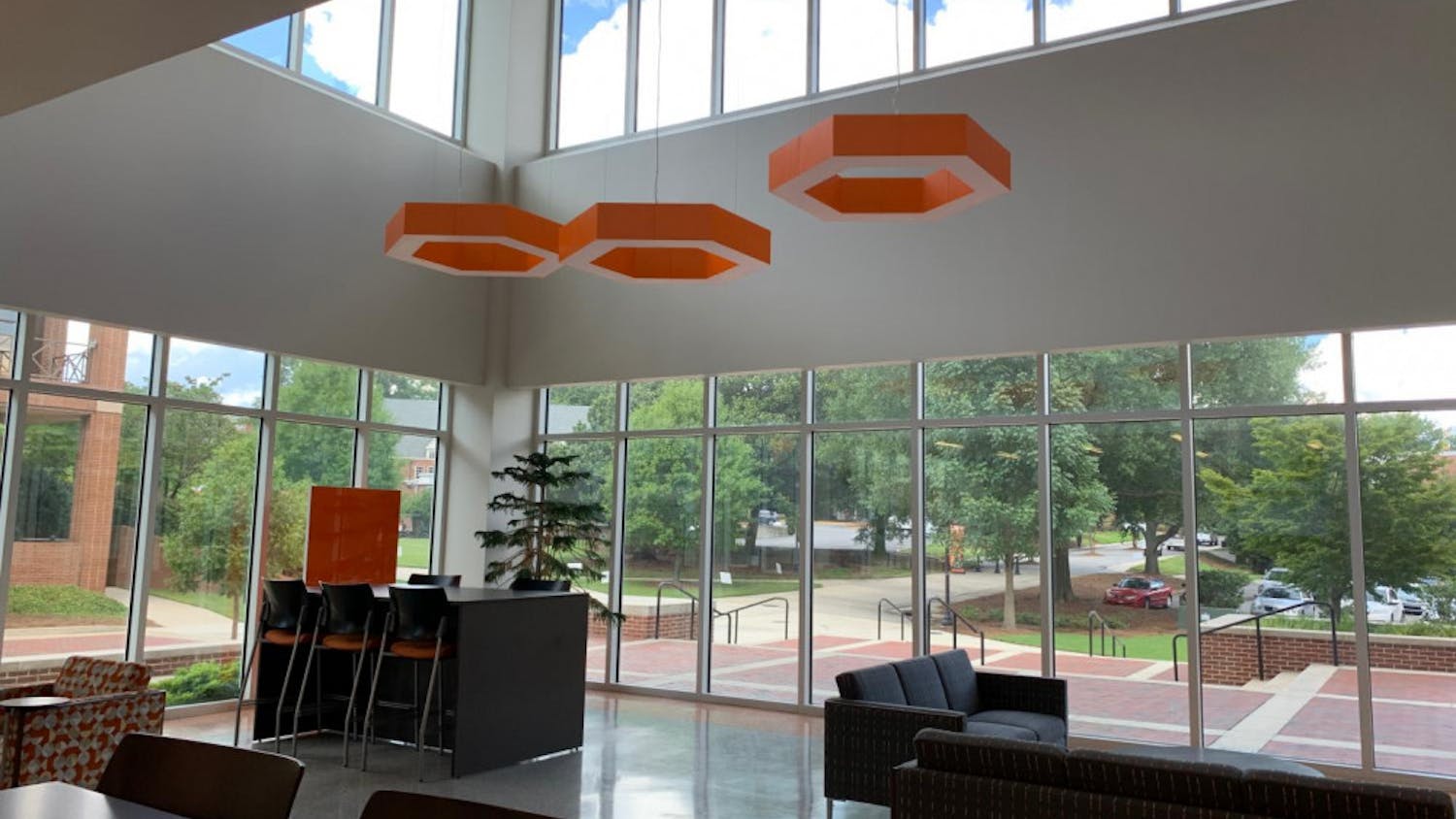

Mercer University is the model of a histori- cal campus encompassed by poverty. When most people hear this they imagine broken streets, unmanaged properties and trash everywhere. You cannot blame anyone for Macon’s stereotypes because they are often true. When on Mercer’s campus, though, you begin to notice a change, especially in the cleanliness. In terms of Mercer’s recycling, however, it could be broadened to encompass various materials.
Mercer has shown its drive to go green by using recycled materials to build parts of the newly renovated “Caf”, such as the glass and tables. With the recycling bins everywhere it is hard not to notice, but has the university ever thought of recycling one key item such as Styrofoam? When it comes to going green, Styrofoam is one of the harshest materials in the world. According to The National Bureau of Standards Center for Fire Research, there are 57 chemical by-products released during the creation of Styrofoam. It also takes more than 1 million years for Styrofoam to decompose; with 25 billion Styrofoam cups thrown away every year in America, a problem begins to arise. If Mercer plans to continue going green, then it should take another step towards its recycling project.
The recycling of Styrofoam is not commonly heard of because it is a difficult product, but it is still a course of action that can be taken. Even though Mercer has reduced its use of Styrofoam, it is still prominent around campus. Therefore, the recycling of this material is necessary. Restaurants such as Fountain of Juice and Margaritas are two of the many businesses that use Styrofoam for to-go purposes, both restaurants being located in Mercer Village.
In this fast paced society, ordering to-go has become a commodity. As the poverty rates increase, the amount of fast food companies also increase due to the affordable and fast access to food. The limited budget college students have and the location of the university present the convenient opportunity for students to eat out at places such as Chick-fil-a, Zaxbys, Mc. Donald’s and Sonic. Students eating at these locations are likely to take the fast food to-go and bring it back on Mercer’s campus, but where does the Styrofoam go from there? Unless students are shipping their Styrofoam, it goes to our good ol’ friend, the landfill.
If Mercer considers adding Styrofoam recycling bins then they would be one of the few universities in Georgia to recycle Styrofoam. Talk about bringing change! Just by placing a few recycling bins at key points around campus and having a polymer company pick it up, with a little extra cost, then the success of the green project will be eminent. All students need to do is run their Styrofoam through some water to make sure it is clean before dropping it in the bin.
By washing the Styrofoam, you are saving the company an estimated 1.8 million dol- lars a year and 40,000 of that cost is just for machinery. If actions are taken, instead of belonging to the majority of the population that throw away 25 billion Styrofoam cups, we can be the Mercarians that bring change and recycle thousands of Styrofoam materials. This needs to be an immediate change in order for there to be a beneficial lifelong result.





